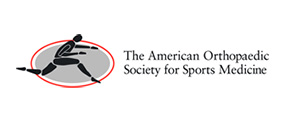
Your Surgery
Surgery: Before, During and After
Before your surgery:
Several steps go into the pre-surgical process.
First and foremost, Dr. Hyman will determine with you if there are any reasonable NON-SURGICAL options to help your condition. He prefers to see you get well without surgery if at all possible. Don't worry, you won't find him overly aggressive to operate on you! Unfortunately, by the time most patients get to us, they have already had prolonged months/years of pain, failed physical therapy, exercise and activity modification, and medications. While physical therapy, acupuncture, chiropractic, etc can be of value in select instances for the soft tissues around the hip, most problems related to the actual hip joint do not get better with these techniques.
Once you and Dr. Hyman agree that hip arthroscopy is right for you, the preparation process includes the following: even more patient education, insurance authorization, and surgery scheduling. Dr. Hyman will further study your case and imaging studies and make sure no further data is needed. A week or so prior to your surgery, you will come in for a 'pre-operative visit' wherein you will have all questions answered and a re-exam and a risk/safety assessment to make sure you get the best care possible. Your 'informed consent' forms will be completed. Special needs equipment is confirmed. (We do adjust our pre-operative visit schedule to accommodate International or out of state patients who may need to come a day or two early and stay at a local hotel)
During your surgery:
You arrive at the facility about 1.5 hrs prior to your scheduled surgical time. After checking in at the registration desk, you will go to the PRE-OP area where you will take off your loose fitting clothes (sweats are good) and get in a hospital gown. All your belongings are safely organized. You will have a review of how to use your crutches for after surgery. They will confirm you have not had anything to eat or drink since midnight and your hip is cleaned and scrubbed in preparation for the surgery.
You are transported via bed to the PRE-OP holding area just outside of the Operating Room. There you will meet up with your O.R. nurses, the anesthesiologists, Dr. Hyman and his Physician Assistant, Danelle. Your last minute questions are answered. This is your last chance to use the restroom too! Then you say goodbye to loved ones and you are wheeled into the O.R. Setting you up in the O.R. requires you transferring you to an O.R. bed and putting a warming blanket on you. The anesthesiologists will then put you to sleep and Dr. Hyman and Danelle will pad you and position you comfortably on the traction table. Your legs are put in little foot boots and a fluffy pad is placed in the groin area.
The outpatient hip arthroscopic surgery typically lasts 1-2 hours, depending upon the complexity of your condition. Afterwards, you are transferred to the recovery room and Dr. Hyman will discuss your case with the friends or family who are taking you home. In the recovery room, you will have an ice pack on your hip and lots of TLC and some medication. Your feet will be wrapped up with a pillow to prevent your legs from rolling around and irritating your hip. You will also find yourself wearing medical stockings (TED hose) to help prevent the already unlikely issue of Deep Venous Thrombosis (DVT or blood clot). The nurses in the recovery room will monitor your condition and once they and the anesthesiologist feel it is safe for you to go home, they will go over the discharge plan with you and whoever is taking you home. You are wheeled out to your car and off you go.
If you'd like more details of the surgical process, see the Surgical Technique page.

After your surgery:



The first few days at home are challenging. If possible, it's best not to have to go up / down a lot of stairs in the first two weeks. It's doable but not ideal. Getting in / out of cars is also challenging. Between surgery and your first post-operative visit, you will will be at home and using an ICE PACK or CRYOTHERAPY device several times a day and may also be using a CPM for 4-6 hours a day, set to 0-60 degrees. This will help the range of motion of your hip joint. We ask that you not bend your hip past 90 degrees so you don't irritate the joint and cause excessive inflammation.
Most patients are using crutches with both legs extended (ie the operated leg hangs straight down but you just don't put weight on it for 2 weeks, possibly four. Dr. Hyman and/or his PA, Danelle Toole, PA-C will let you know. You will wear the white TED hose stockings until your first follow-up visit with Dr. Hyman. At this first visit, you should plan extra time as well as you will have a session of PT with Katheryn, our exceptionally experienced and excellent physical therapist. Even if you are ultimately doing your physical therapy elsewhere, they can give you good advice.
You will have a pillow between your feet while lying in bed, so your legs to roll inwards or outwards for excessive periods of time. Most patients tolerate this but if you cannot sleep with the pillow, AND you can lay still, it is okay to go without it.
When you come into the office for your first post op visit, someone will need to drive you. At that visit, we will review your case, give you the pictures of the inside of your hip and return your radiology studies to you. We will outline your rehab program and make sure all is well.
Who will be taking care of you and your surgery, other than your surgeon?
Once the patient and the surgeon agree that surgery is the best treatment option, a lot of things go in to the patient's surgical experience, and ultimately the OUTCOME. You probably are not aware of how many people are involved in ensuring a good surgical result for you, but if you're interested to know, read on.
In our society, the surgeon is presumed to take ultimate responsibility for the patient's care and surgical results. However, in reality, there are a great many individuals, not directly under the surgeon's control, that will also affect the patient's surgical result. Some of them you'll meet along your 'surgical journey,' many of them you'll never know existed. It is important, however, to realize that any one of these people can have an impact, good or bad, on your surgical experience and final outcome.
These people have varying levels of education, expertise, attention to detail, motivation, and standards of excellence. The point is, choose your doctor well, but also hope that the supporting staff that works with you are upholding the same level of care provided by your doctor. In short, it's not just the doctor you need to worry about.
The following list is in chronological order, starting from the first people involved in your surgical journey, to the last people involved when your care is completed. If any one of these individuals is not giving their full, undivided attention to your care, (and sometimes even if they are) you could experience a complication/bad outcome. Your surgeon will likely be assigned the blame, but read on to see who all is really involved. Your surgeon doesn't supervise or interact with most of these people. As you'll see, other than your surgeon, there are more than thirty (30) people who impact you.
Before your surgery:
- Pre-operative nurse- This person will do your initial screening before surgery and assess your health risks for anesthesia. If they detect some risk factor, they may send you to your PCP for further screening.Click Here to download the Bleeding & Clotting Risk Factors PDF form.
- Your primary care physician (PCP) - Depending on your age, your PCP may be asked to provide a note stating that you are in as good of medical condition as you reasonably could be - in anticipation of your upcoming surgery. Often they will order some blood work.
- The phlebotomist - This person draws your blood. Poor technique can contaminate your blood sample or cause infection from the needle.
- The laboratory technician - If you have any blood work or labs ordered by your doctor, the lab tech must process the blood properly and give accurate results.
- The nursing secretary - This person takes the doctors written medical orders in your chart and enters them into the computer, including medication types and dosages.
- The radiologist - This doctor reviews your xrays, ultrasound, and MRI and determines the official result.
- The radiology/MRI technician - This person is the individual who actually does your MRI, and sets all the parameters for your study. The doctor is NOT usually present during this test.
- The EKG technician - This tech sets up this test to determine if your heart is beating properly.
- The surgeon's staff/medical assistants/nurses - They will complete your paperwork with you, and give you your prescriptions and instructions.
The day of your surgery:
- The pre-surgery holding area nurse - After you check in, this nurse will get you 'prepped' which will include putting in an IV catheter in your arm, and possibly shaving the area of the surgery. Poor technique can lead to infection.
- The nurse anesthetist - This person will get you ready for anesthesia and be administering most of your anesthetic medications. Needles will be used and medication vials will be opened. They will also determine how much 'gas' you get. They will be with you throughout the surgery, but they often rotate to give each other breaks. Therefore, you may have 2 or 3 nurse anesthetists attending to you while you are asleep. They are also responsible for checking to make sure your body is in a padded and protected position throughout the surgery. Poor technique can lead to death or permanent functional damage.
- The anesthesiologist – If required, this doctor will be present to supervise your nurse anesthetist by occasionally coming in the operating room to 'see how things are going.' They are often present at the beginning and end of your surgery. The anesthesiologist also confirms that the position of your body (sitting up, laying on your side, your back, or your stomach) should be safe for your surgery. Poor technique can lead to permanent functional damage.
- The scrub nurse - This person will be handing the instruments to the surgeon, and assembling all the gadgets that the surgeon uses. These individuals often rotate, and in a hospital setting, may have no experience with orthopaedics or with the surgeon's techniques. Improper techniques can lead to infection, broken implants, delaying the surgeon and incorrect devices implanted.
- The circulating nurse - This person walks around in the operating room, recording the medications given, the time things happen, and hooking up different types of equipment for the surgeon's tools. They may have to open sterile equipment and also prepare sterile materials/solutions that will ultimately go into your body. Improper techniques can lead to infection, delaying the surgeon and incorrect devices implanted.
- The surgical assistant tech (SA) - This person assists the surgeon by holding equipment or tools when the surgeon's hands are full. They sometimes sew wounds closed or may even be asked by the surgeon to operate some of the tools.
- The physician assistant - This person assists the surgeon by holding equipment or tools when the surgeon's hands are full. They sometimes sew wounds closed or may even be asked by the surgeon to operate some of the tools.
- The implant/devices equipment rep - This individual brings in (from their office or the trunk of their car) special devices that will be used on you or implanted in you. They will also instruct the scrub nurse on how to properly assemble these things for the surgeon's use.
- The orderly help in the operating room - These individuals help transfer you on and off the operating room table while you are 'out of it.' Forceful movements could damage the surgeon's work, or injure you.
- The sterilization staff - These individuals stay in the 'laundry room' of the OR. It is their job to clean, wash, rinse, scrub, and sterilize all the surgical tools. Poor technique can lead to infection or broken tools.
- The housekeeping staff - These individuals clean the room (operating room or hospital room) in between patients to decontaminate and remove harmful germs. Poor technique can lead to contamination of your surgery.
- The recovery room nurse - This nurse will monitor you while you wake up in the recovery room, giving you pain medication, and checking you for signs of complications from your surgery. He/she will also adjust your sling, brace, splint or cast, and apply an ice pack to reduce swelling. The setup of these devices can affect your results. Lack of attention here can lead to death or functional impairment.
- Recovery room x-ray tech - Often, before you wake up in the recovery room, an x-ray will be taken of your operated area. This person will move you around to position you for the x-rays. Forceful movements could damage the surgeon's work.
- The floor nurse - If you stay in the hospital overnight, a nurse will watch after you, usually a different nurse every 8-12 hours. The night nurses are more likely to be foreign graduates.
- Your pharmacist - This person is responsible for filling your prescriptions the way the doctor ordered, and checking to see if there might be any bad drug reactions from the medications. Filling this inaccurately can lead to nausea, pain or worse.
After your surgery:
- Your family or friends - Depending upon your resources, you may have other people assisting you, giving you advice and impacting your recovery. Unless you live with your surgeon, that assistance or advice may not always be 100% correct.
- Visiting nurse - If you have a nurse come out to your house after surgery, he/she will be assisting you, giving you advice and impacting your recovery.
- Hospital staff - If you are admitted to the hospital, you'll be meeting some of the above people again; having your blood drawn, orders transcribed, more tests, more interpretations, more nursing care.
- The physical therapist - Soon after your surgery or discharge, you will likely begin some form of the physical therapy / rehabilitation. This person will move help you move your injured body part around to aid in recovery. Therapy that is too aggressive can cause pain, re-injury or inflammation. Therapy that not aggressive enough can lead to weakness and stiffness and a loss of function.
- The surgeon's medical/clinical staff/nurse/PA - These people work for the doctor, and they will be returning your phone calls, acting as an intermediary between you and the surgeon, giving you medical advice, calling in prescription re-fills, renewing therapy orders, and filling out forms. Lack of attention to detail here could impact your recovery.
- Durable medical equipment rep - This person may fit you with a brace, sling, boot, cast or mechanical medical device to aid in your recovery. The setup of these devices can affect your results.
- Home equipment rep - This person may come out to your house to set up, or deliver home equipment to aid in your recovery. This individual's transport these items from their office or the trunk of their car. The setup of these devices can affect your results.
- Special equipment rep - This person may be called on to set you up with a special medical device, eg bone stimulator or oxygen tank, etc. The setup of these devices can affect your results.
- The workers at your insurance company - This institution controls payments for all the above services. If they refuse to pay for your care or grant you the benefits of these services above, it could delay or inhibit your timely recovery.
Ultimately, you, the patient, can have the biggest impact on your care. IF all these people above (and your surgeon) do their best, and IF you have good fortune, you still have a lot of work to do for your best shot at a great result. You should:
- Follow the post-surgical guidelines
- Communicate your concerns if some arise
- Avoid harmful products like tobacco, alcohol and recreational drugs
- Take your medications as prescribed
- Complete your physical therapy as prescribed
- Do your home exercises
- Be patient with yourself
- Be optimistic, but realistic
- Expect some ups and downs along the way
- Make sure you understand 'the plan' for your recovery
I would like to thank you sincerely for the great care that you have provided me. I am deeply grateful to both of you and all your wonderful clinic and hospital team.
Dr. Hyman diagnosed my problem right away. I had surgery a couple of months later and now after 2 years I feel like a new person.
Since Dr. Hyman operated on my left hip I’ve been able to walk better, longer, and with better ease than I could ever imagine.
I thank God every day that I had that surgery since I have finally gotten rid of the pain that has kept me awake at night for years.
I appreciate you taking the time to educate me about my injury. I also appreciate the kindness and professionalism of the entire staff at Atlanta Sports Medicine.
Thank you so much from the bottom of my heart. For the first time in approximately a year and a half I am pain free.
I appreciate the attentive, professional care and could not envision a better experience. I truly am thankful to be under your care.







